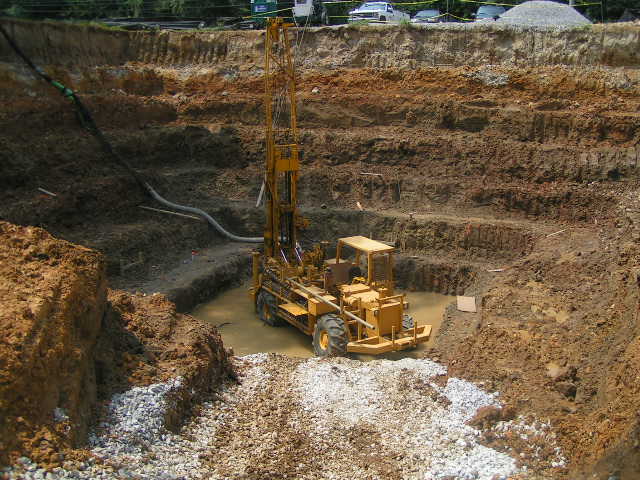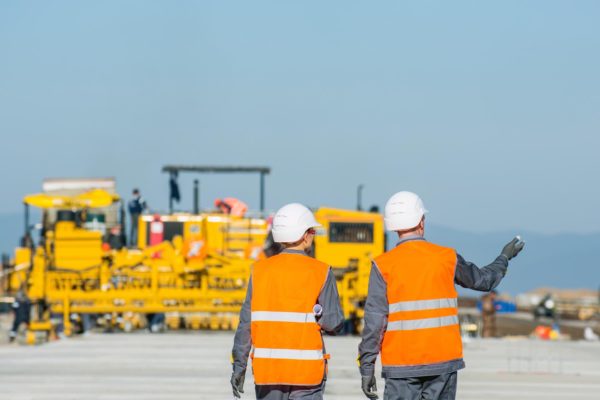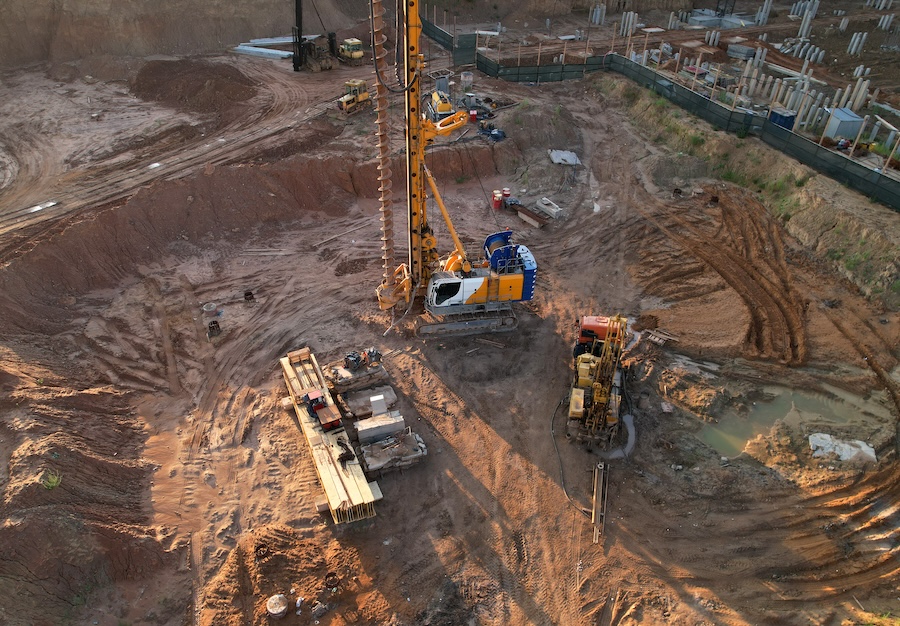Vital Tools and Technologies for Modern Geotechnical Engineers
Wiki Article
Exploring the Cutting-edge Methods and Technologies Forming the Future of the Geotechnical Sector for Lasting Engineering Solutions
The geotechnical market is undertaking a transformative change, driven by ingenious techniques and modern technologies that stress sustainable design options. Advanced dirt stabilization approaches, using smart products, and the application of data analytics are redefining exactly how we come close to facilities challenges. As these innovations advertise environmental stewardship, they likewise raise crucial concerns concerning their useful implementation and lasting effectiveness. Understanding the interaction in between these technologies and their possible to reinvent the area welcomes additional expedition into the future of sustainable design practices.Advanced Soil Stabilization Strategies
Dirt stablizing is a vital process in geotechnical engineering, focused on boosting the physical properties of soil to boost its load-bearing capability and toughness. Advanced dirt stabilization strategies play a crucial duty in attending to obstacles associated with weak or unstable soils, consequently allowing safe and efficient building and construction methods.Among the famous techniques, chemical stabilization includes using ingredients such as lime, concrete, or fly ash, which respond with dirt bits to develop a more natural mass. This method is especially reliable in improving the stamina and dampness resistance of large clay soils. Mechanical stablizing, on the other hand, includes the physical modification of soil residential or commercial properties with compaction or the incorporation of granular products, bring about boosted thickness and stability.
Another cutting-edge method is making use of geosynthetics, which give reinforcement and reduce dirt disintegration while enhancing water drainage. Techniques like soil mixing and deep dirt stablizing are additionally obtaining grip, enabling for in-situ treatment of troublesome dirts. Collectively, these advanced approaches not only enhance the efficiency of soil structures but additionally add to sustainable engineering methods by reducing the demand for considerable excavation and material transportation.
Smart Materials in Geotechnics
Advancement is at the leading edge of geotechnical engineering, especially with the incorporation of wise products that boost the performance and performance of dirt frameworks. Smart materials, such as shape memory alloys, piezoelectric materials, and self-healing polymers, are reinventing the method designers approach soil stablizing and framework durability (engineer of record). These materials can adjust to altering environmental conditions, react to stress, and also fix themselves, considerably enhancing the durability of geotechnical systemsFor example, piezoelectric products can generate electrical charges in feedback to mechanical stress and anxiety, offering possible for real-time monitoring of soil conditions and architectural stability. Self-healing materials can autonomously repair cracks and problems, reducing maintenance expenses and prolonging the lifespan of geotechnical possessions. The integration of these wise products not just improves the mechanical buildings of soil however also contributes to lasting design practices by reducing source consumption and environmental effect.
As the geotechnical market continues to evolve, the adoption of smart products will certainly play a crucial role in developing cutting-edge services, guaranteeing that frameworks are not only robust however likewise adaptable to future challenges. This transformative technique is positioned to redefine the requirements of security and efficiency in geotechnical design.
Data Analytics for Facilities
The integration of clever materials in geotechnical design has led the means for sophisticated methods, particularly in the world of information analytics for framework. This cutting-edge approach leverages considerable information collection and analytical strategies to boost decision-making processes throughout the infrastructure lifecycle. By making use of sensing units installed in clever materials, engineers can constantly keep an eye on important specifications such as soil stability, moisture levels, and architectural honesty.Data analytics enables the transformation of raw information right into workable understandings, enabling for predictive upkeep and enhanced risk monitoring. Advanced formulas and maker discovering techniques facilitate the recognition of patterns and anomalies, which can educate timely interventions and optimize resource appropriation. Furthermore, integrating geographical info systems (GIS) enhances spatial evaluation, further improving the decision-making framework.
As framework jobs expand in complexity, the dependence on data analytics comes to be progressively vital. It fosters a positive technique, reducing the likelihood of failures and ensuring the durability and sustainability of frameworks. By taking advantage of the power of data analytics, the geotechnical market is positioned to not just enhance present techniques however additionally pioneer cutting-edge remedies for future facilities challenges. This synergy of technology and engineering principles will specify the future of sustainable framework development.

Lasting Ground Improvement Approaches
Different lasting ground improvement techniques are emerging as crucial solutions to attend to the obstacles of geotechnical engineering while minimizing environmental influence. These methods not only boost soil performance yet also advertise environmental stewardship by lowering dependence on conventional, a lot more invasive techniques.
Another ingenious approach is the application of geosynthetics, that includes naturally degradable materials that strengthen dirt while promoting drain and disintegration control - tailings engineer. This lowers the need for heavy equipment and reduces website disruption, hence preserving regional ecological communities
On top of that, methods such as vibrant compaction and vibro-replacement have actually developed to include lasting techniques, including recycled materials and minimizing carbon footprints. These techniques exhibit the sector's change in the direction of even more environmentally responsible services, making sure that ground renovation not just meets engineering demands however likewise adds favorably to the surrounding setting.
Developments in Environmental Tracking
In recent times, improvements in ecological tracking have considerably improved the capacity to analyze and take care of geotechnical tasks with marginal eco-friendly disturbance. Cutting-edge modern technologies, such as remote picking up, Net of Things (IoT) devices, and real-time information analytics, are changing just how ecological effects are determined and alleviated.Remote picking up modern technologies, including satellite images and airborne LiDAR, help with the rapid assessment of land usage adjustments and ecological conditions - tailings engineer. These tools permit continuous surveillance of websites, allowing engineers to recognize possible problems before they rise. In addition, IoT gadgets, geared up with sensing units for criteria like dirt temperature, moisture, engineer of record and gas emissions, give online data streams that boost the understanding of site-specific environmental variables
Real-time information analytics even more fine-tune decision-making processes by incorporating data from numerous sources, permitting for proactive monitoring techniques. This holistic strategy not only ensures conformity with ecological policies yet also promotes sustainable techniques within the geotechnical sector.
As these technologies proceed to evolve, they hold the possible to link the gap in between design goals and environmental stewardship, fostering an extra sustainable future for geotechnical jobs worldwide.
Verdict
Advanced soil stabilization approaches, the integration of smart products, and the application of information analytics jointly improve the durability and effectiveness of facilities. These developments not just address modern design difficulties but also lead the means for a much more sustainable future in geotechnical practices.Strategies like soil mixing and deep dirt stabilization are additionally obtaining traction, enabling for in-situ therapy of troublesome soils. Jointly, these advanced approaches not only boost the performance of dirt structures yet likewise add to sustainable design methods by minimizing the demand for comprehensive excavation and product transport.

Report this wiki page